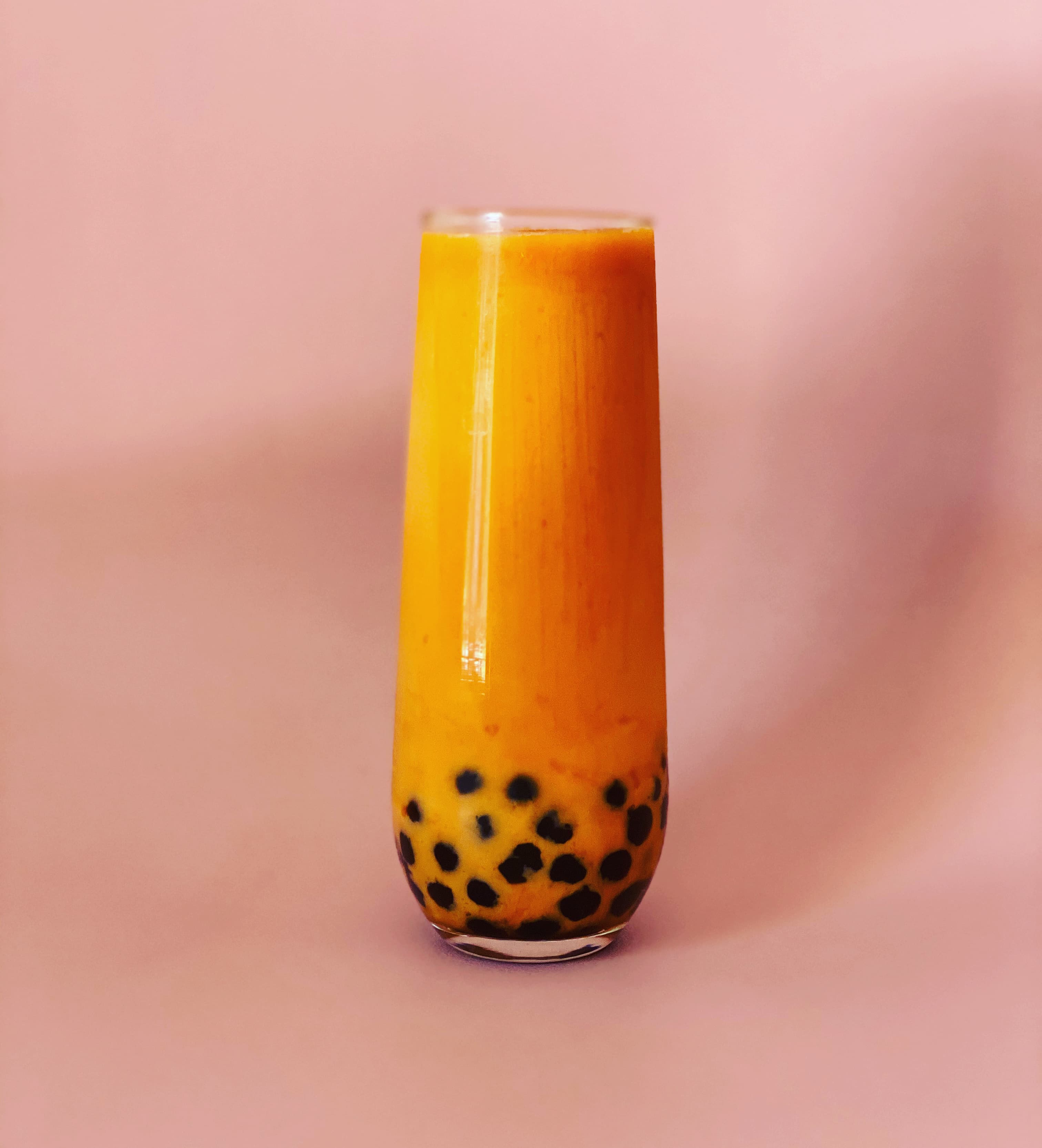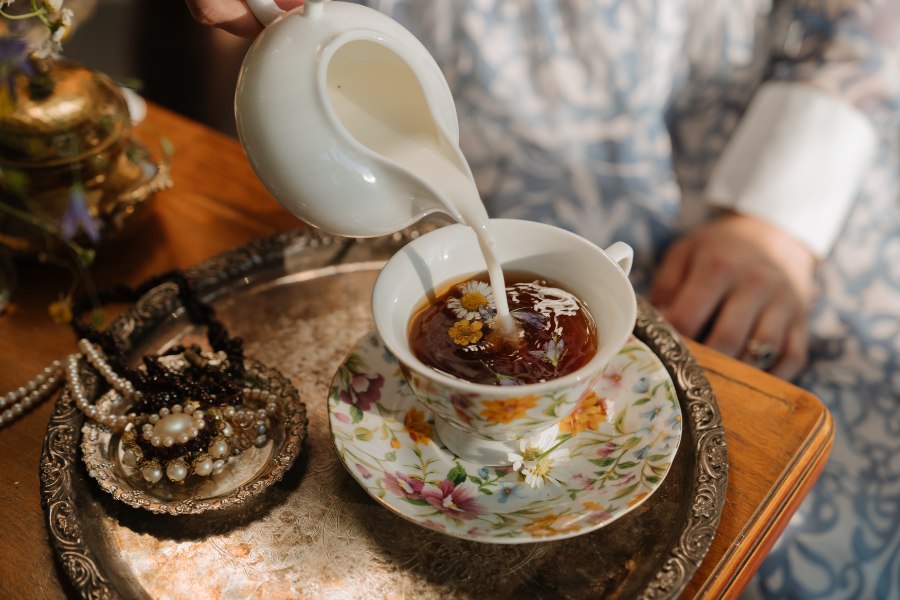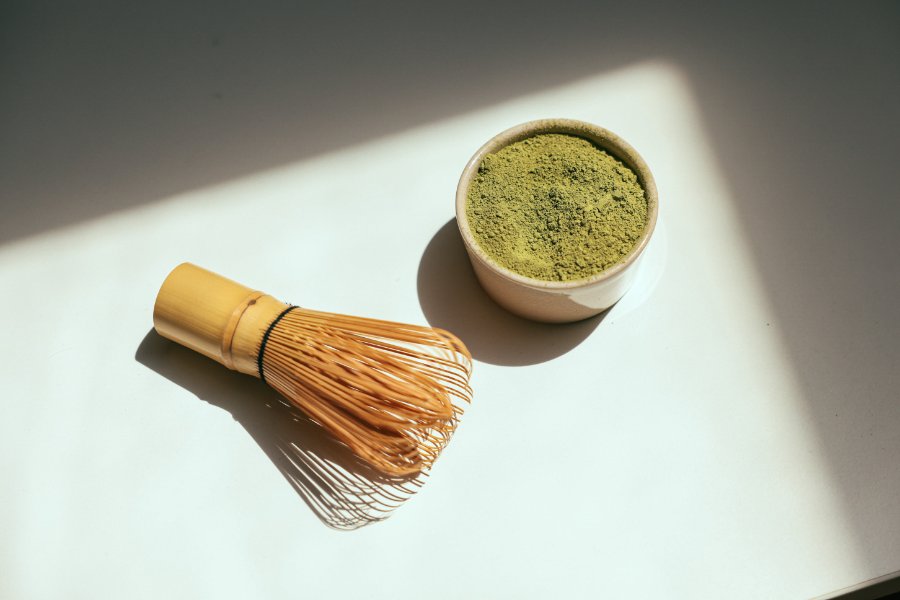
28 August, 2021 | Bon Tea Cafe Updated 2021
How to Make Lavender Milk Tea?
Aromatic, tasty, soft, and soothing - these are the first associations of all those people who are already lucky enough to get acquainted with the taste of lavender milk tea. Regardless of how laborious and stressful your day was, you always want to free your head from business and worries, close your eyes, and replenish the energy spent for the whole day in the evening. The best and healthiest way to regain lost strength is with a cup of delicious lavender milk tea. Lavender milk tea is floral and delicate; the aroma is simultaneously light from flowers but rich, warm, and sweet from milk and honey.
What Are the Benefits of Lavender Milk Tea?
Drinking tea is suitable for any situation. However, the most common sorts of tea (especially black and green) concentrate a high dose of caffeine, which specialists advise strictly controlling and limiting. Here, herbal teas definitely stand out - they are totally caffeine-free. Additionally, they are full of benefits and extremely delicious. It is worth saying that each plant, and therefore tea, has its unique features. For example, black lavender tea can help manage stress and improve skin conditions.
Avicenna said best of all about lavender: "It is a whip for the heart and a broom for the brain." Hippocrates pointed out that "lavender warms the brain, tired of the past years." The famous English physician John Parkinson described this plant as "a wonderful remedy for all head and brain diseases." Let's take a look at all the best qualities of lavender milk tea separately.
Good Mood
Our ancestors have used lavender for centuries as the most practical medicine to fight depression. The substances in dried lavender have a beneficial effect on the areas of the brain responsible for mood, relieving stress, anxiety, and fatigue. Milk also serves as an excellent component that enhances all of the listed advantages of lavender. This chai tea also acts as a natural energetic, quickly restoring strength.
Deep Sleep

It is best to drink lavender milk tea at night, not only because there is practically no caffeine in its concentration but also because it has a natural soothing feature. Here again, the ability of organic compounds in the composition to have a slight sedative effect on the human nervous system plays an important role. After a cup of this delicious lavender milk tea, you will sleep perfectly and won't have any trouble getting up in the morning. In addition, this organic tea can eliminate headaches, especially of a neurological nature.
Wonderful and Healthy Skin
Lavender, especially lavender oil, has an excellent anti-inflammatory and antibacterial quality. Moreover, the applied lavender cream perfectly cleanses the skin of all toxins, the accumulation of which negatively affects the skin, leading to breakouts and rapid aging. And if oils affect our skin only from the outside, then such a miraculous drink as lavender milk tea improves our skin condition from the inside!
Pain Reliever
Lavender can relieve muscle spasms and pain. In addition, the tannins in lavender flowers are soothing and anti-inflammatory, so a cup of lavender tea after exercise or during the most challenging days of your cycle will significantly improve your overall well-being and relieve pain.
Composition and Calorie Content of Lavender
Lavender is a treasure trove of essential oils. Its flowers contain up to 3% of this component, leaves - up to 0.35%, and stems - up to 0.2%. However, the most valuable element of lavender is linalyl acetate. According to clinical studies, it activates the regeneration of body cells.
In addition, lavender flowers and stems contain a lot of other valuable substances:
- Cineol. It is a natural antiseptic that helps remove phlegm from the lungs.
- Tannin. It eliminates inflammatory processes in the body, heals ulcers on the mucous membranes of the respiratory tract. Also, this component allows you to quickly restore health to people whose heavy metal salts have been poisoned.
- Citral. Another natural antiseptic with anti-inflammatory and analgesic effects. It helps to cure eye infections.
- Ursolic acid. It has an antiseptic and anti-inflammatory effect, acts as a natural pacemaker, helps prevent atherosclerosis, and helps the body fight cancer cells.
- Valeric acid. It improves colon function.
It is the minimum list of healthy ingredients that lavender contains. There are many more of them. The plant has a minimum calorie content. The protein content in the same amount of the product is 4 g, fat - 0.7 g, and carbohydrates - 0.2 g.
Step by Step: How to Prepare the Lavender Milk Tea?
Where to Look for the Lavender Flowers?
In the wild nature of the USA, people can find it mainly in the southern states. More often, people cultivate in gardens, farms, and parks, taking root quite well. The lavender loves sunny places and dry soil more, but it will grow even in the shade or hollow. True, you can hardly achieve a large harvest of flowers in such conditions. But remember that you should not cut plants growing near large industrial sites, railway lines, or highways. Furthermore, collecting the lavender from large landfills is undesirable, not far from livestock farms, in areas contaminated with radionuclides. The herbs actively absorb all toxic substances and therefore can poison the air in the room.
Preparations for Drying
If you are going to dry out flowers for the lavender tea, you do not need to leave the collected raw materials for a long time without processing. If the herb lies in a heap for more than 3-4 hours, mold will begin to grow in it, so the lavender may start to rot. Therefore, it immediately needs to be sorted out from everything unnecessary: shoots of other plants, leaves, garbage, overripe flowers. The lavender is often collected for drying in small bundles of 10-20 shoots, tied with a thread.
The Best way to Dry Lavender

It is best to dry herbs outdoors. Then lavender will not lose its beneficial substances, as well as its aroma. Drying can last from two weeks to a month. To do this,
- Pull ropes, heavy thread, or fishing line in a convenient location.
- Hang up fragrant lavender bouquets, heads down.
- Check to dry every day, swapping bunches as needed to improve ventilation.
Ingredients
½ cup water,
1 cup milk (almond, coconut if you are vegan),
a tablespoon of lavender buds/flowers,
any sweetener: maple syrup, honey, etc. (optional)
Instructions for Making the Best Lavender Milk Tea
- Immerse lavender buds in hot water for about 5 minutes.
- While the tea is infusing, heat the milk in a small saucepan until it boils (but don't overflow).
- Then strain the lavender using a tea basket and pour warmed milk over the strained tea in the mug.
- Add sweetener to taste, stir and enjoy your lavender tea!
Notes
- If you want your lavender milk tea to have a richer flavor, you can add a teaspoon of Earl Grey.
- If you do not have the opportunity to collect or dry lavender flowers yourself, you can buy them in the online store.
- Lavender is contraindicated for pregnant women, people with low blood pressure, and liver problems.
- I advise you to use nut milk (almonds or cashews) because nuts go well with slightly bitter lavender, complemented by the addition of raw honey and pure vanilla extract.
- You can use dried lavender in beauty products, aromatherapy, baked goods, lavender milk tea, herbal remedies, spiritual rituals, and beverages.





